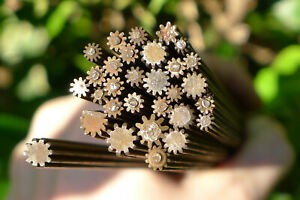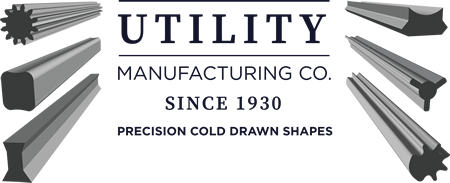What is a Pinion Wire and How is it Manufactured using Cold Drawn Steel

Pinion wire serves a very specific purpose. This wire is used in many different industries, as it’s stronger than simple gears since the steel is shaped when cooled and the notches are built into it. If you’ve ever heard of the rack and pinion steering, then you’re already aware of one such purpose for this wire.
However, none of this answers the question of what exactly is pinion wire, and how is it manufactured? These are two very important questions for anyone who wants to know more about this wire and the processes of making it. We’ll cover the details here.
What You Need to Know About Cold Drawn Steel
Let’s start out by discussing cold drawn steel. This is a type of steel that is made following a very specific process. The metals (usually iron and another type of metal that becomes an important part of the alloy) are melted down together.
This is called smelting. From there, the molten metal is cooled slightly and coated with a drawing lubricant. This lubricant is necessary in order for the metal to be pulled through the dies that form it into shape.
For the record, this is why it’s referred to as “drawn” steel because the steel is drawn through the dies. The number of dies that it goes through depends on the desired final width of the material. If it’s something like a very thin wire, then it will go through many progressively smaller dies.
What’s so important about this process? Well, in order to point this out, we need to briefly go over the other types of steel. There is steel that’s formed when hot, which is less strong than the cold drawn types.
This hot steel is molded and formed, and then allowed to cool. This is called hot rolled steel. There’s also cold rolled steel, which is made in a similar way, although the steel is partially cooled when it’s molded and shaped.
The main advantage of cold rolled steel is the fact that it’s stronger than hot rolled steel, and it will hold its shape better. Cold drawn steel rounds out this trifecta.
Because the steel is drawn through dies, it ends up being narrower than steel that’s made and shaped using the other methods. As a result, you’ll end up with steel wire of various kinds, including pinion wire.
What Exactly Is a Pinion Wire?
Now that you know how it’s made, it’s time to describe exactly what pinion wire is. This wire comes in a number of different diameters and consists of a standard piece of wire with notches or grooves molded into its sides.
When you view it from one end, it looks a little bit like a gear. However, it’s much stronger than a gear, because those notches are molded in, not added on during the finishing process.
It consists of one solid piece of metal that many people slice into individual gears. With that said, it’s important to note that there are fewer “teeth” molded into the pinion wire than you’ll find on normal gears.
How Are Pinion Wires Manufactured?
We’ve already described the cold drawing process, so you have a general understanding of how pinion wires are made. However, there’s a bit more to it than the brief description above. Since pinion wire has grooves (similar to the ones that you see in gears) molded into it, it must go through a very special die.
This dies is what places those grooves there. Unlike other types of cold drawn steel, the pinion wire can’t be reshaped and redrawn through the dies in order to make it progressively thinner.
Instead, the grooves must be notched in during the last phase of production. Otherwise, they’ll be stretched out, misshapen, or even molded in a way that will prevent them from working properly.
Finally, there’s one more thing to note about pinion wire. This wire comes in a number of different diameters and thicknesses, and when you’re buying it in a store, you’ll notice that it tends to be a little bent.
This is due to how it’s manufactured, as well as the fact that most of the people who use it tend to slice it into pieces and only use a bit of it at a time. Because of this, it doesn’t matter that the wire is a little bit bent in places. The end results end up working just fine.
Hopefully, this clears up some of the mystery surrounding pinion wire and the process by which it’s manufactured.
As you can see, this wire serves some very important purposes and is made using the cold drawn steel process. Without pinion wire, things like rack and pinion steering wouldn’t exist. This wire is quite useful indeed!

